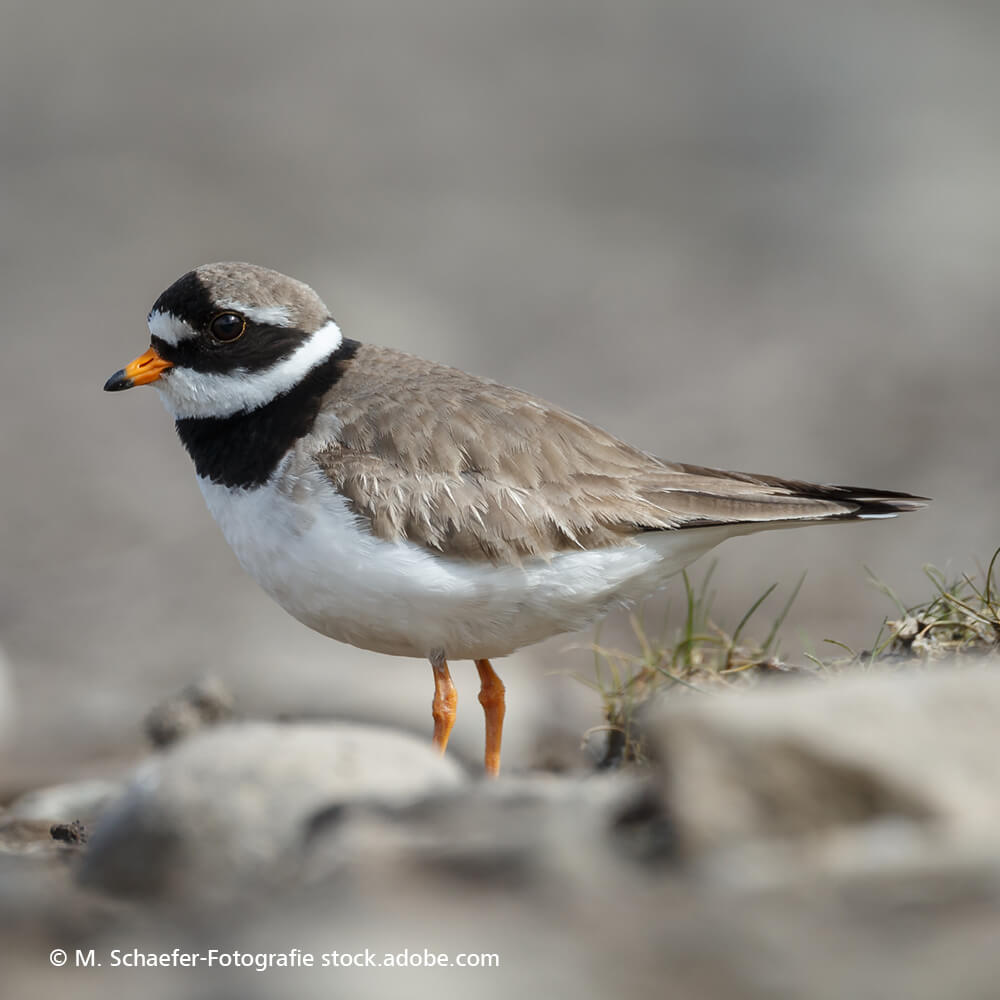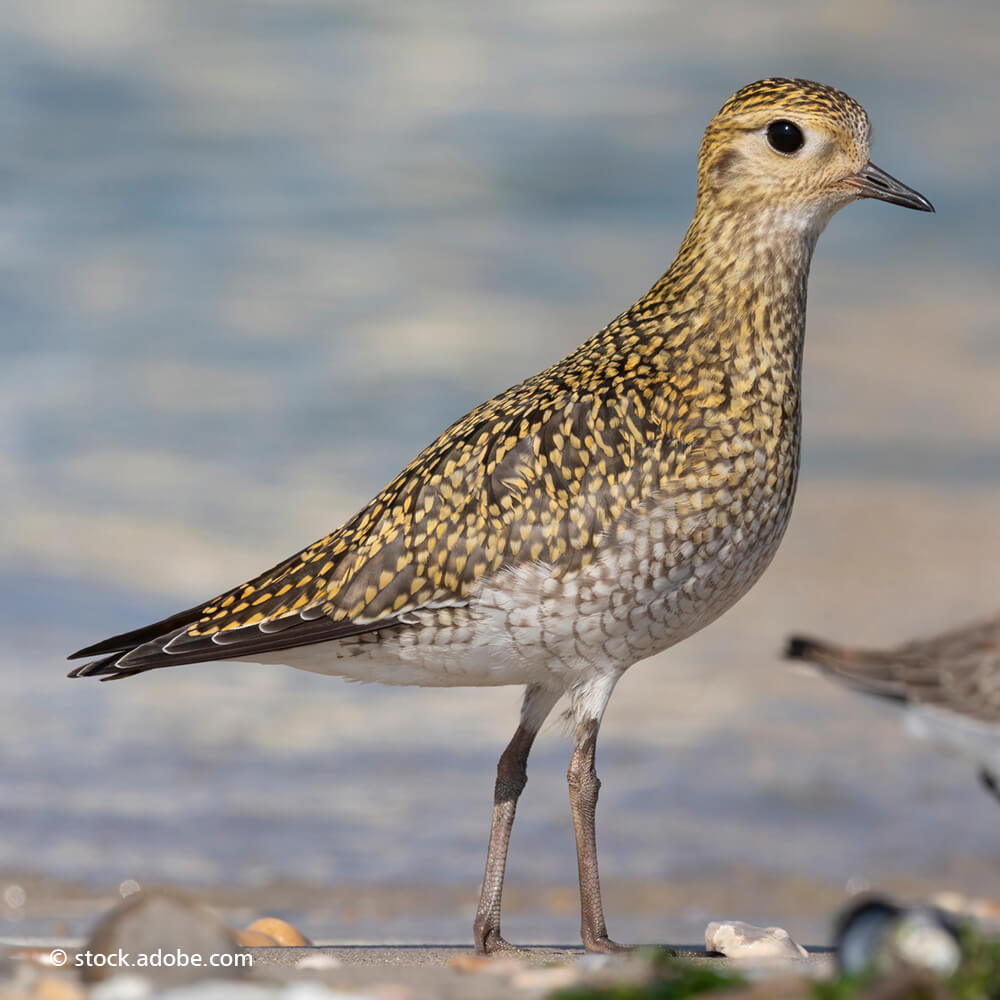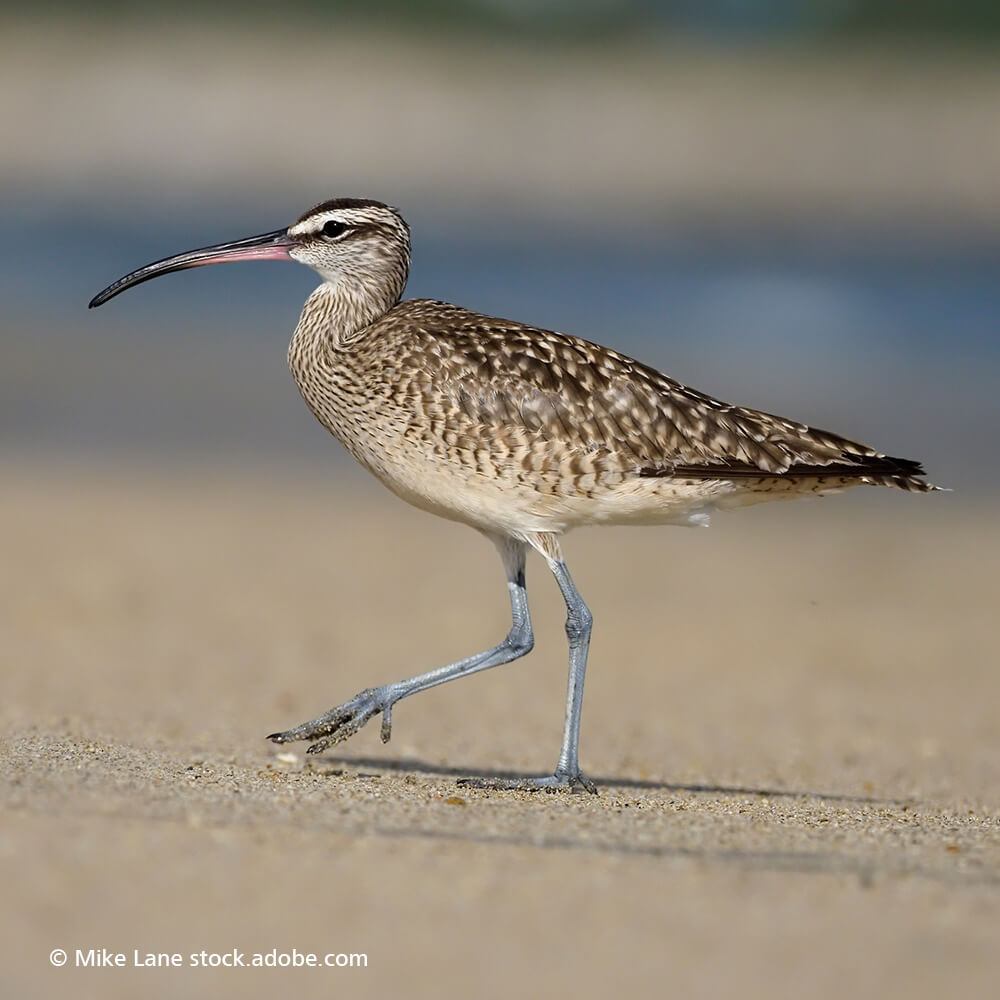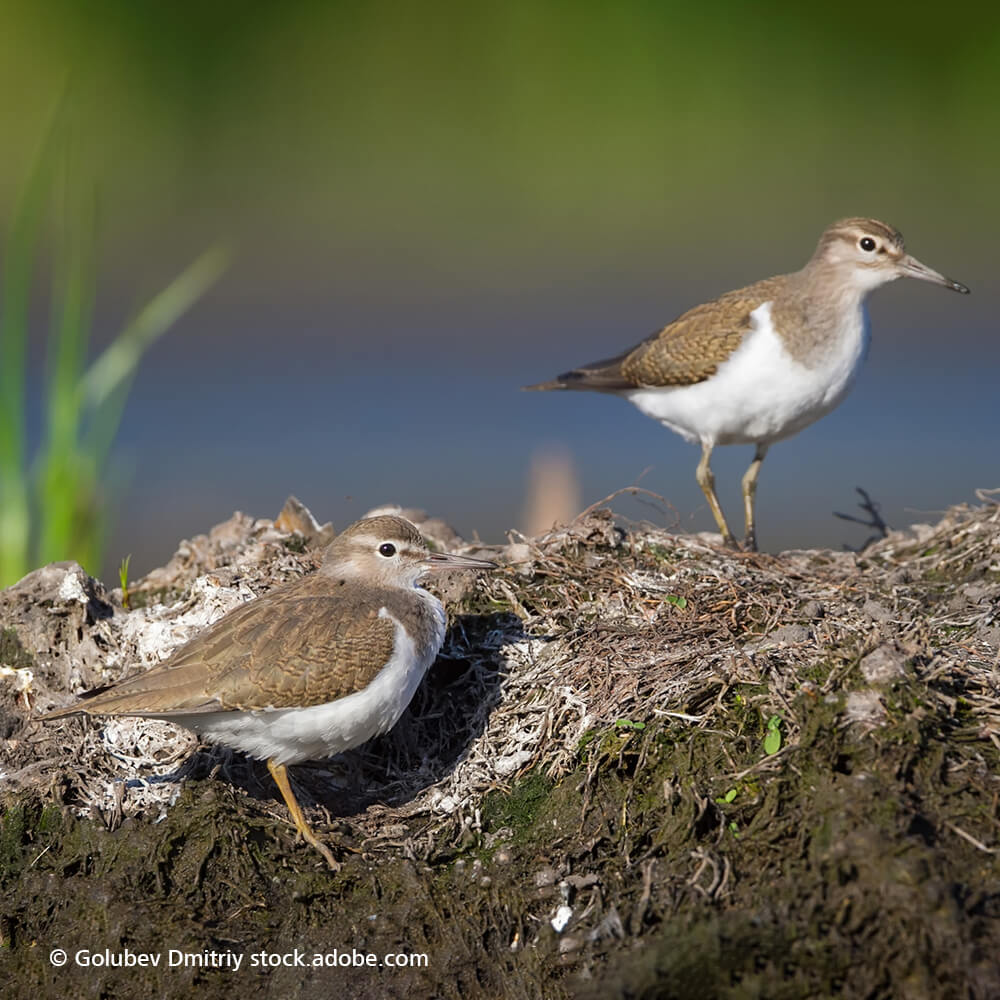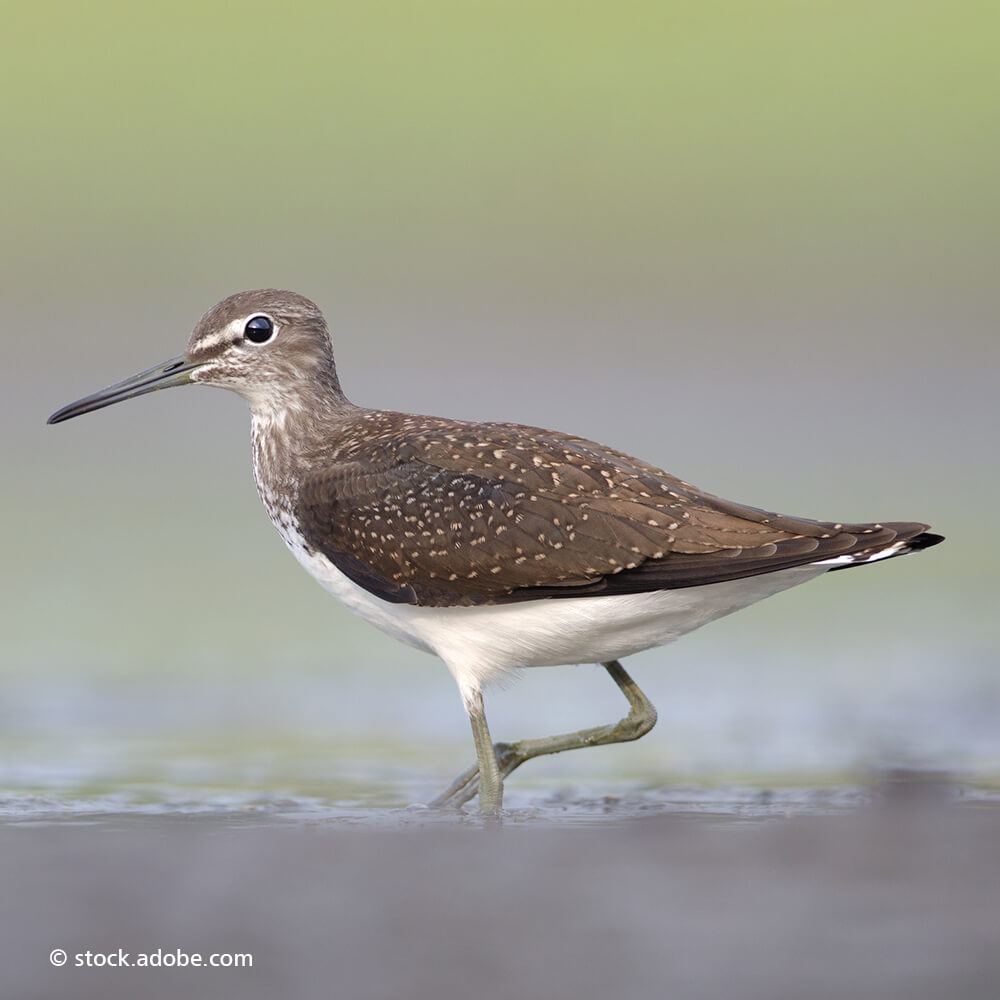They have an elegant appearance and impress with their long beak, with which they prefer to search for food on the shore.
Waders belong to the group of shorebirds and include a variety of species and genera. In the second part of this series we would like to give you an overview of other waders who seem to look very similar at a first glance.
- Common Ringed Plover (Charadrius hiaticula) vs. Little Ringed Plover (Charadrius dubius)
- Grey Plover (Pluvialis squatarola) vs. Golden Plover (Pluvialis apricaria)
- Eurasian Curlew (Numenius arquata) vs. Eurasian Whimbrel (Numenius phaeopus)
- Common Sandpiper (Actitis hypoleucos) vs. Green Sandpiper (Tringa ochropus) vs. Wood Sandpiper (Tringa glareola)
Part 1 comprises the differentiation of Snipes, Red Knot/Dunlin/Sandpiper, Godwit and Redshank/Greenshank for your reference: Overview of Common European Waders – Nature Observation (zeiss.com)
Common Ringed Plover (Charadrius hiaticula)
- Small sized
- Short bill, in summer the tip is black with an orange tone closer to the head and in winter the bill becomes a dull black
- The overall appearance looks quite round and compact with a clean white belly and “mud” brown wings and back. In the summer they’re noticeable with an obvious black ring around the base of the neck and chest, thick black markings around the head and a white forehead. In the winter the tones are much duller and washed out.
- Short orange legs
Little Ringed Plover (Charadrius dubius)
- Slightly smaller than Ringed Plover
- The bill is slightly longer than Ringed Plover although more slim
- When comparing to a Ringed Plover, the Little Ringed Plover is slimmer in appearance with an obvious “sandy” brown wings and back, the head markings are similar to a Ringed Plover although can be easily separated from the distinct yellow orbital ring around the eye. Because these are summer migrants, the Little Ringed Plover moults on its wintering grounds in Africa but the juveniles can be distinguished from being more washed out in appearance.
- Longer legs than Ringed Plover and washed-out pink in colour
Grey Plover (Pluvialis squatarola)
- Large size
- Dark, heavy bill
- In summer these birds are unmistakeable with an apparent monochrome appearance, with a black belly, neck and face which has a white border from the shoulder to the supercilium along with a mottled black and white wings and back. Then in winter the Grey Plover moults into a drabber appearance with grey, washed-out tones.
- Long black legs
- In flight they can be distinguished due to having black auxiliaries which appear like “arm pits”
European Golden Plover (Pluvialis apricaria)
- Slightly smaller than Grey Plover
- Dark bill but slimmer than Grey Plover
- In summer the Golden Plover is striking with it’s black belly, neck and face similar to that of a Grey Plover but the back and wings are mottled with a golden, brown pattern with a white border. In winter the European Golden Plover moults into a drabber appearance with golden, washed-out tones
- Black legs
Eurasian Curlew (Numenius arquata)
- Largest wader
- Long down-curved bill, the females have a much longer bill
- This is a species that is heavily streaked across the whole bird with a brown colouration to them.
Eurasian Whimbrel (Numenius phaeopus)
- Slightly smaller than a Curlew
- Down-curved bill although smaller in length than a Curlew
- In appearance the Whimbrel is streaked just like a Curlew, although they appear much colder toned & grey in colour and they have dark distinct eyestrip too.
Common Sandpiper (Actitis hypoleucos)
- Small-sized, medium length, straight bill
- Yellow/greenish legs
- Key feature with Common Sandpipers is the fact they “bob” quite often.
- This species has a clean white belly with the white extending up around the shoulder of the wing, brown wings and back, streaked head and neck.
Green Sandpiper (Tringa ochropus)
- Medium-sized
- Green/greyish leg colours
- Clean white belly, at a distant the back and wings may appear black with fine white spots and a streaked head and neck which show a strong contrast with the belly.
- Medium bill
Wood Sandpiper (Tringa glareola)
- Medium-sized
- Same bill length as a Green Sandpiper/Common Redshank
- Striking feature about this species is the obvious supercilium that runs from the beak and behind the eye, the streaking on the neck and breast has a slow gradient into a white belly, these birds show a mottled back and wings that appears brown which gives the appearance of a Common Redshank
- Long yellow legs

